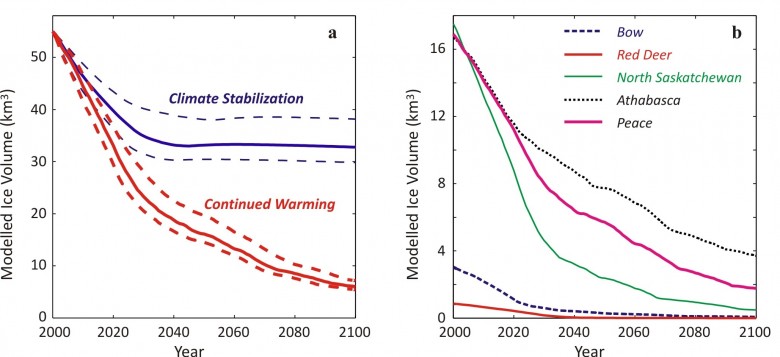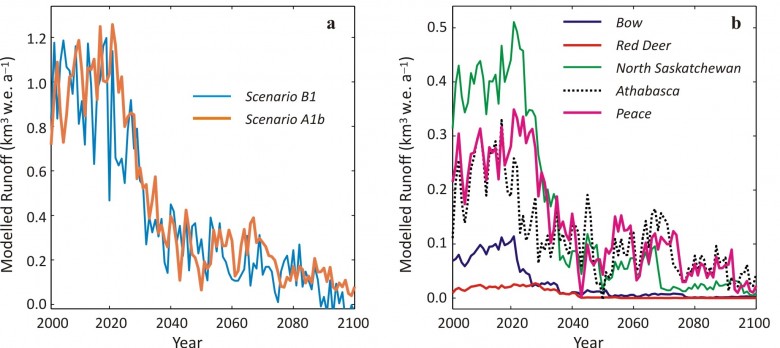As noted on the Past Variability of Glaciers page of this site, Canadian glaciers have been melting rapidly since the end of the Little Ice Age about 150 years ago. Continuing climate changes, which are predicted to result from increasing concentrations of greenhouse gases in the atmosphere, are likely to have a further and significant impact on the health of glaciers in Canada. Anticipated glacier shrinkage would contribute to global sea level rise, and increased inputs of fresh water to high latitude oceans might modify patterns of ocean circulation in the North Atlantic. Some glaciers will ultimately disappear.


Click figure for larger image.
Numerical models on the influence of changing climate on glacier mass balance are required to evaluate the magnitude and significance of the changes in glacier volume which might occur. To date, however, the development of numerical mass balance models specifically applicable to Arctic glaciers (where most of Canada's ice resides) has been hindered by the lack of detailed field datasets required to drive the models and evaluate their performance. Currently, scientists are working on a detailed meteorological and mass balance dataset collected at John Evans Glacier, Ellesmere Island, Nunavut to develop detailed numerical mass balance models.
Environment and Climate Change Canada and Natural Resources Canada amalgamated their glacier science expertise in a National Glaciology Program. The program improves our understanding of how Canada's glacier and water resources are responding to climate change, enables us to develop adaptive strategies for managing these resources, and provides better information on the movement, deposition and volume of pollution in our environment.
Clarke et al. predicted that Canadian Rockies glaciers would loose up to 80% of ice volume by the end of the century. This prediction is based on the four AR5 emissions scenarios, RCP2.6, RCP4.5, RCP6.0 and RCP8.5, as well as satellite and field observations. The increased, then decreased, water run-off into river environments will have significant impacts on ecosystems, water quality, and agriculture, among others (Clarke et al., 2015). Additional glacier predictions are discussed in Glacier Global Projections Section

References
Glaciers Links
Material on this page was edited by Maren Pauly and Tristan Mills, Department of Geography, University of Waterloo. For photograph references, hover over image.
